Some Vietnamese tourists said they experienced an earthquake while sitting in a car on their way to the ancient village of Shirakawago and felt "swaying like sitting in a hammock".
Japan was hit by 155 earthquakes across the country on January 1, the strongest of which was a 7.6-magnitude quake in Ishikawa Prefecture. The epicenter was in the Noto Peninsula, affecting five prefectures in the region: Ishikawa, Niigata, Fukui, Toyama and Gifu, according to Reuters . The Meteorological Agency said the quake caused major damage, with nearly 50,000 households without power and tens of thousands of homes damaged. At least 20 people were killed.
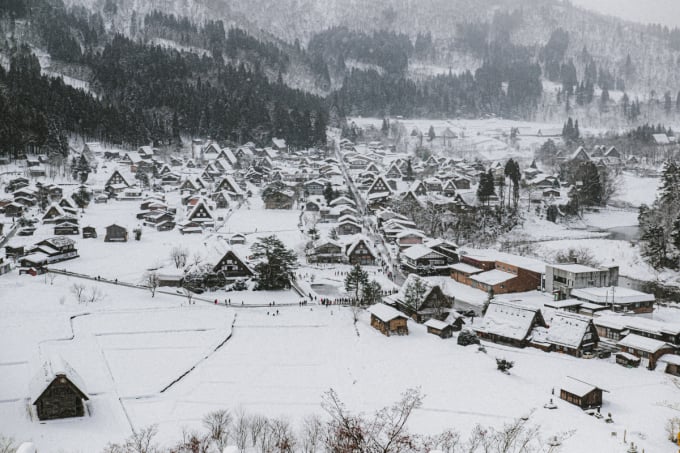
Shirakawago covered in white snow in December. Photo: Nick M.
At the time of the earthquake, there were about 20 Vietnamese tourists visiting the ancient village of Shirakawago, Gifu Prefecture. Shirakawago is about 350 km from Tokyo, is one of the oldest villages in the country and was recognized by UNESCO as a world cultural heritage in 1995.
A Vietnamese tour guide said the Vietnamese tourists were a bit "nervous" but "not too scared" when the earthquake happened. Everyone was sitting in the car, feeling "swayed like sitting in a hammock".
Vietnamese tourists filmed the earthquake in Japan on January 1. Video: Hoang Thang
Mr. Nhan Phuong, Southern Regional Coordinator of the Japan National Tourism Organization (JNTO) in Vietnam, said that Vietnamese tourist groups traveling during the New Year holiday are still safe and there is no panic.
"Many people were surprised and a bit worried when the ground suddenly shook violently and the bus drifted as if on water," said Mr. Phuong.
So far, there have been no casualties or damage to Vietnamese tourist groups. However, some groups were forced to change their schedules and routes because part of the highway was temporarily closed after the earthquake. In an emergency press conference yesterday, Japanese Chief Cabinet Secretary Hayashi Yoshimasa said that some sections of five highways were closed as a precautionary measure, according to Skift.
Grandfather Phuong added that the lobby of a hotel where a group of Vietnamese tourists stayed in Niigata Prefecture was flooded due to a large wave after the earthquake. This is the peak tourist season, so they have no alternative hotel and cannot travel according to their schedule. Most of the tourism programs in the Hokuriku region (including the four provinces of Ishikawa, Fukui, Niigata and Toyama) have been canceled due to damaged highways and closed services.
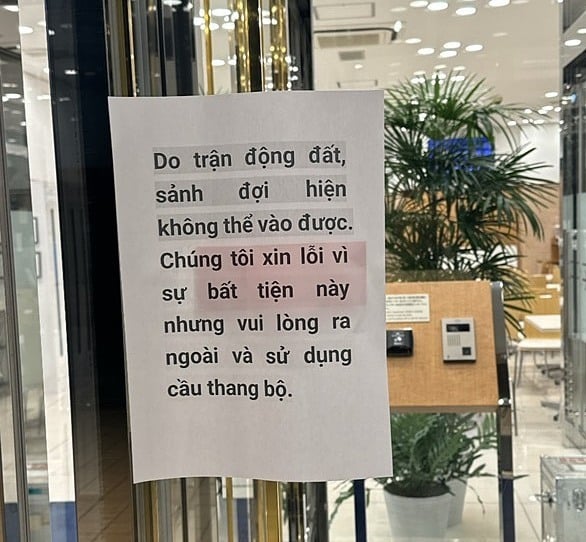
Notice posted on the door of a hotel in Niigata prefecture where a group of Vietnamese tourists visited. Photo: NVCC
According to Ms. Huynh Phan Phuong Hoang, Deputy General Director of Vietravel Tourism Company, December is not the peak season for Vietnamese tourists to Japan. Her company has more than 500 tourists traveling to different cities in Japan, all of which are far from areas with strong earthquakes, so they are not affected. "The groups have now finished their tours and are preparing to return to Vietnam," Ms. Hoang said.
With over 20 years of experience serving Vietnamese customers in the Japanese market, Ms. Hoang said that Japan often has earthquakes, so the government and people always have plans and timely preparations to adapt. Vietnamese travel companies are "familiar" with the earthquake situation in Japan, so everyone has a calm attitude and is not too worried.
Mr. Nguyen Van Dung, Director of Asia Gate Travel, a company with 10 years of experience in the Japanese tour market in Hanoi, said that earthquakes cannot be predicted like the weather. When an earthquake occurs, a text message will be sent to phones in Japan about 10 seconds in advance. "Japan has an average of more than 1,000 earthquakes each year. The places where strong shaking occurred this time did not have many Vietnamese tourists, so most of them are safe," Mr. Dung said.
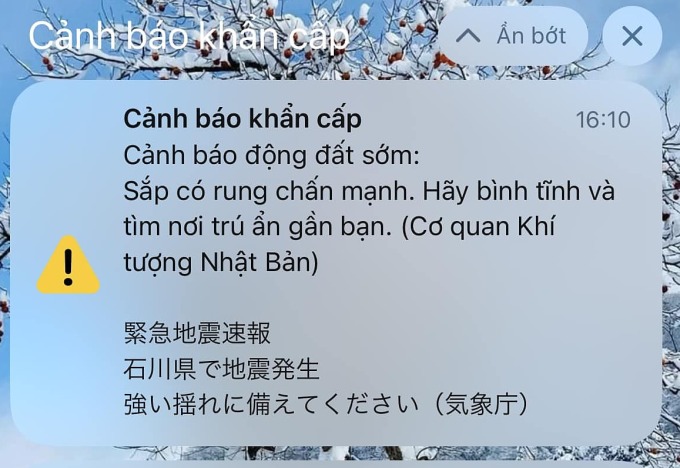
Japan earthquake warning message sent to personal phones. Photo: Hoang Thang
For tourists from Vietnam to Japan, Mr. Phuong recommends "strictly following the instructions of the authorities", especially the instructions from the Japan Meteorological and Disaster Prevention Agency. In addition, visitors also need to listen to instructions from local guides, travel and logistics service providers; quickly find a safe hiding place, stay away from high-rise buildings and public works, and large trees that may fall. Visitors should not use elevators, and charge their phones regularly for easy communication.
Phuong Anh
Source link


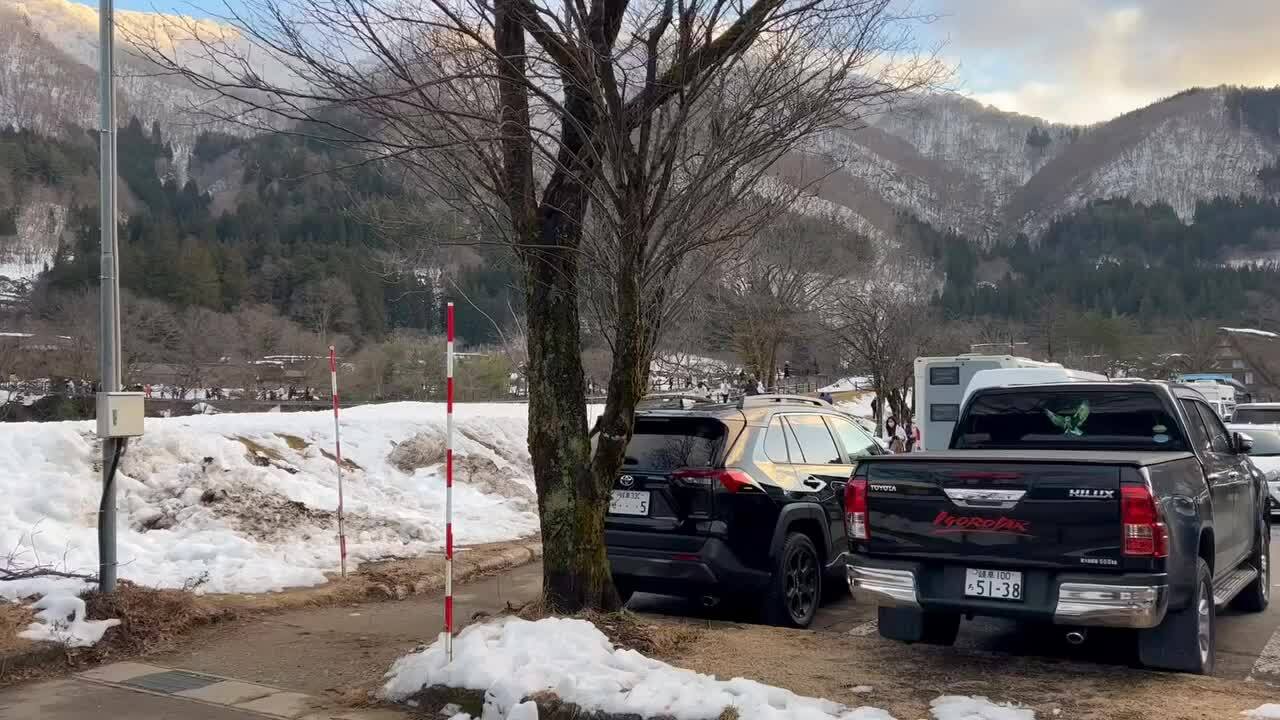
![[Photo] Overcoming all difficulties, speeding up construction progress of Hoa Binh Hydropower Plant Expansion Project](https://vstatic.vietnam.vn/vietnam/resource/IMAGE/2025/4/12/bff04b551e98484c84d74c8faa3526e0)

![[Photo] Closing of the 11th Conference of the 13th Central Committee of the Communist Party of Vietnam](https://vstatic.vietnam.vn/vietnam/resource/IMAGE/2025/4/12/114b57fe6e9b4814a5ddfacf6dfe5b7f)



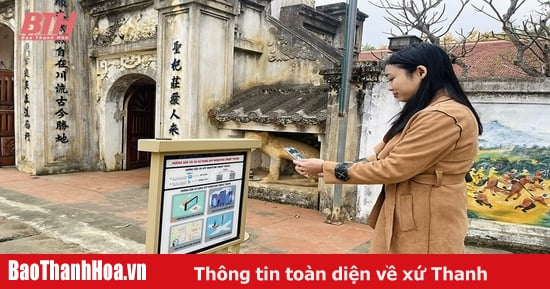

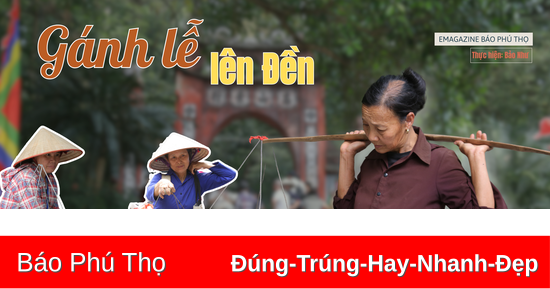

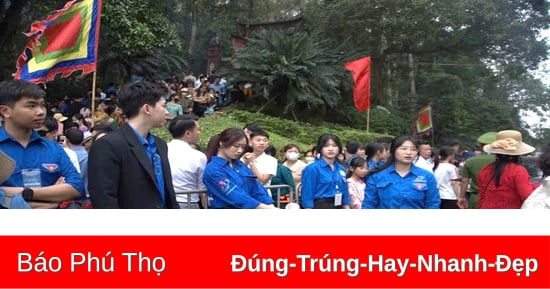
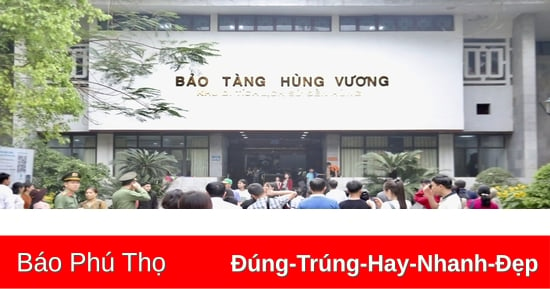
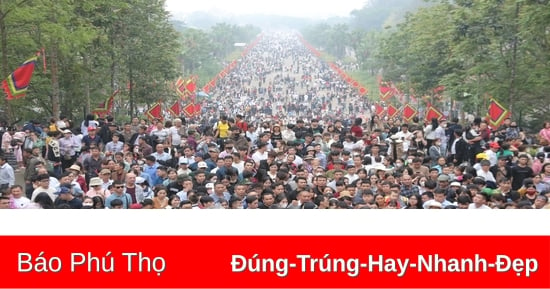
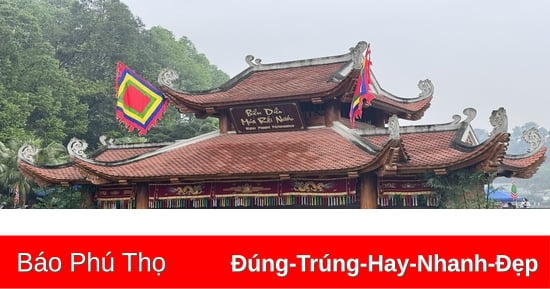
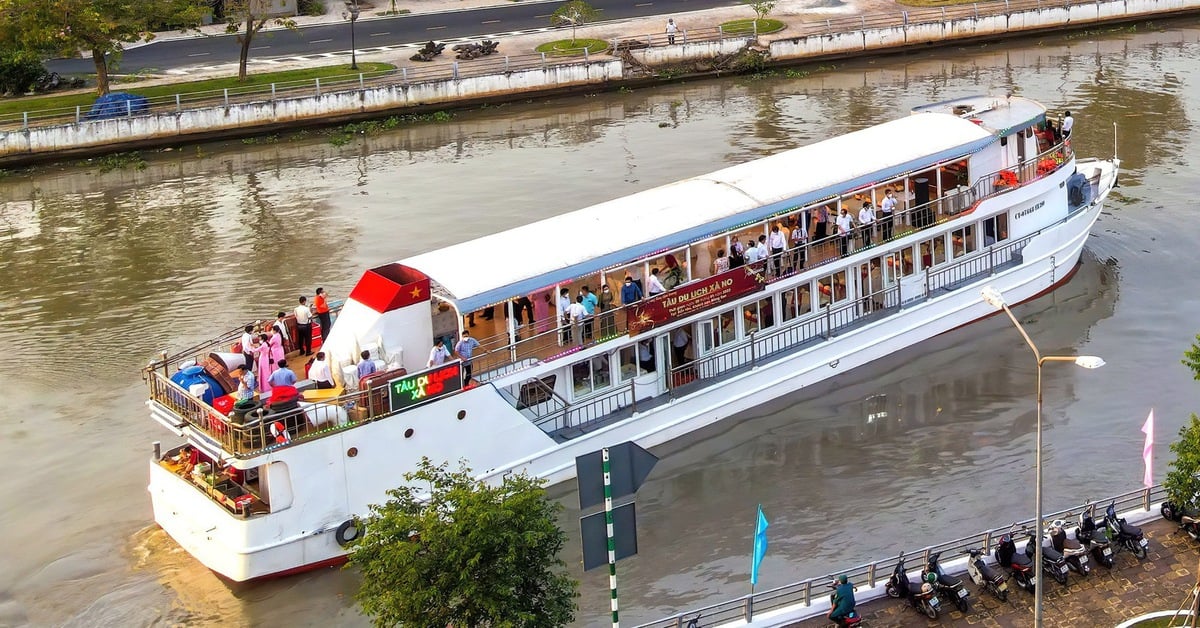
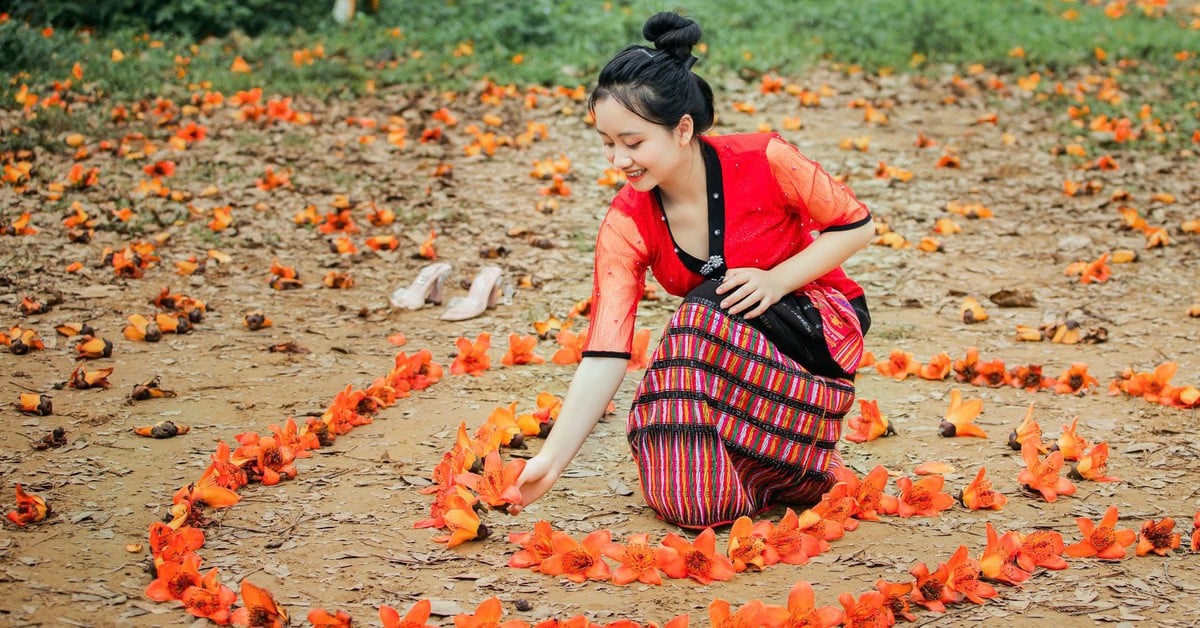
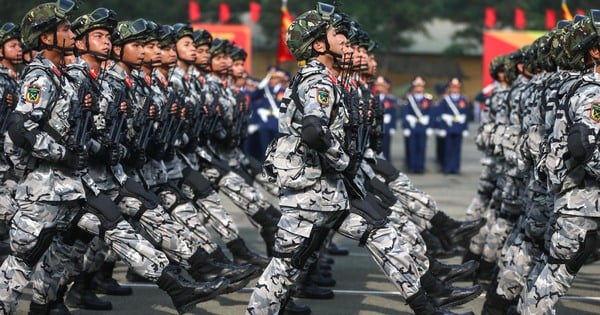


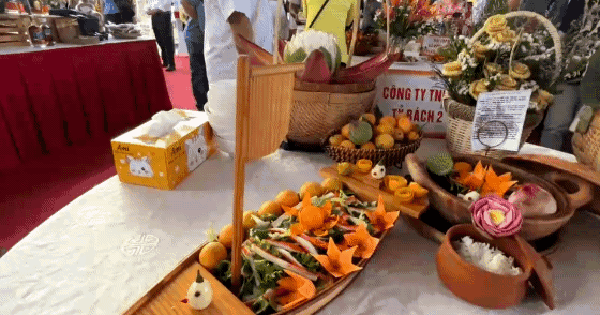



























































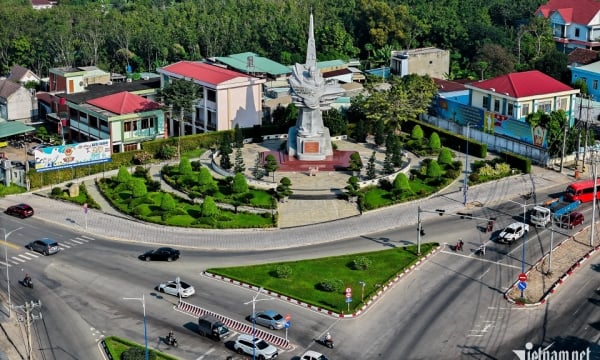

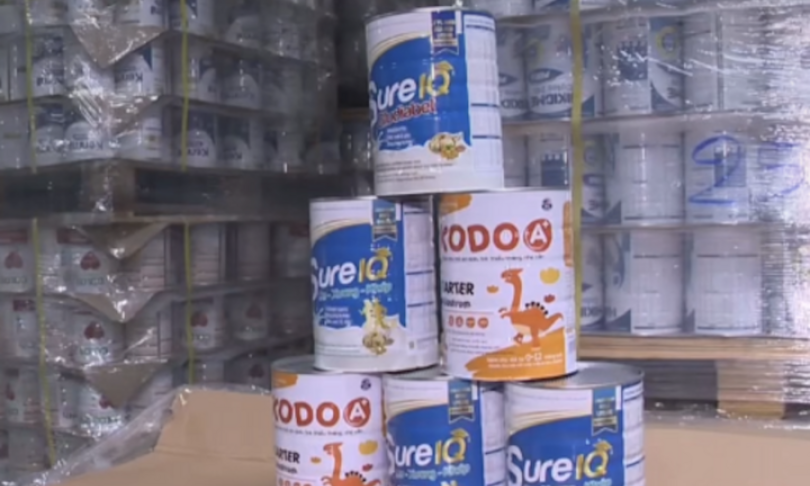
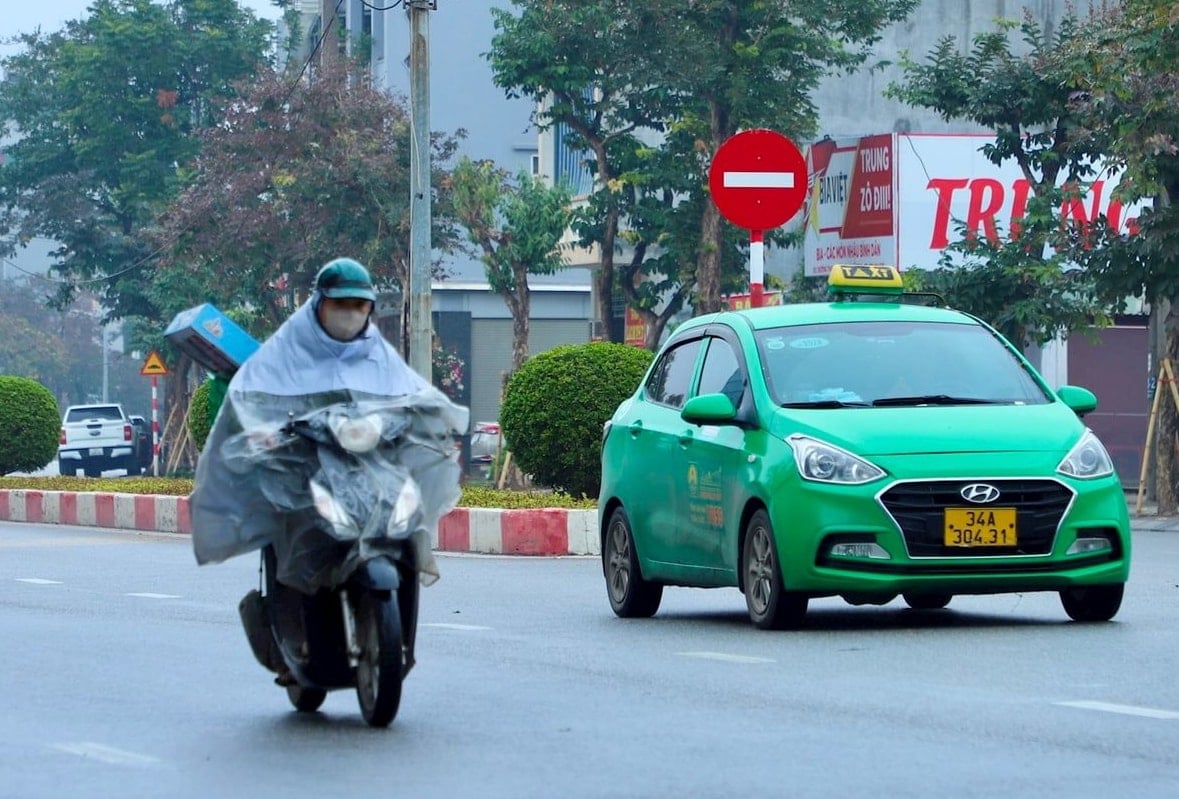











Comment (0)